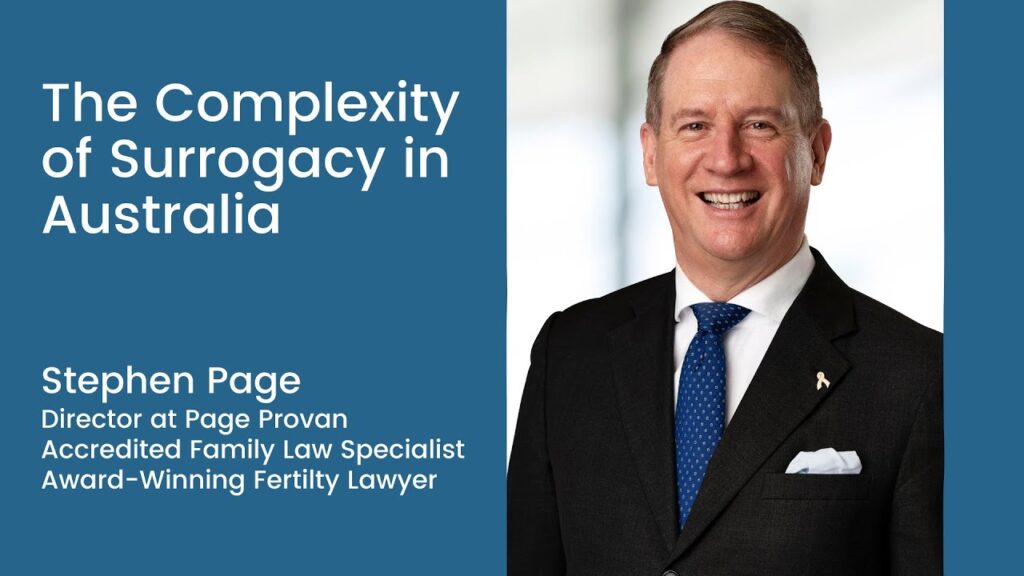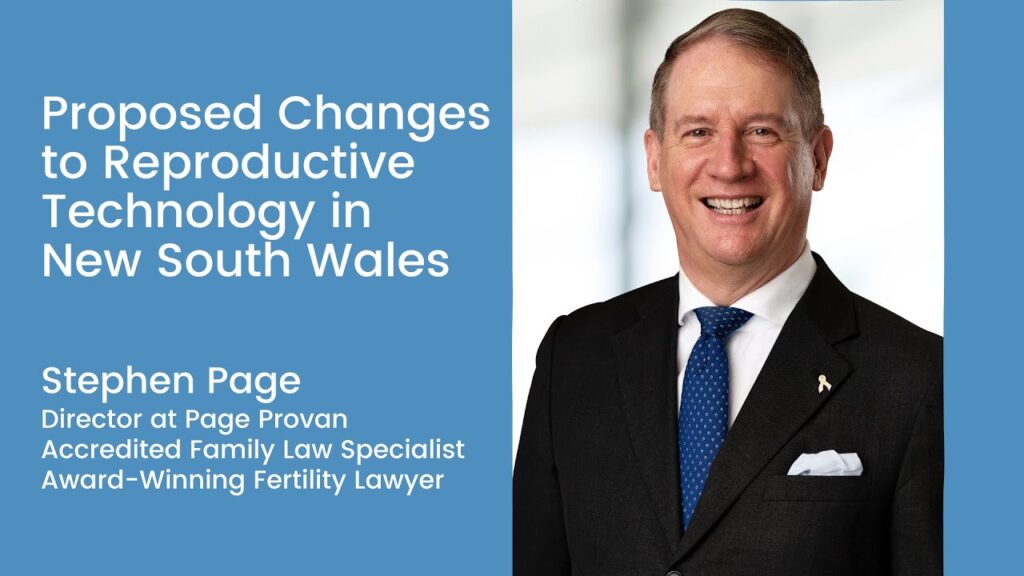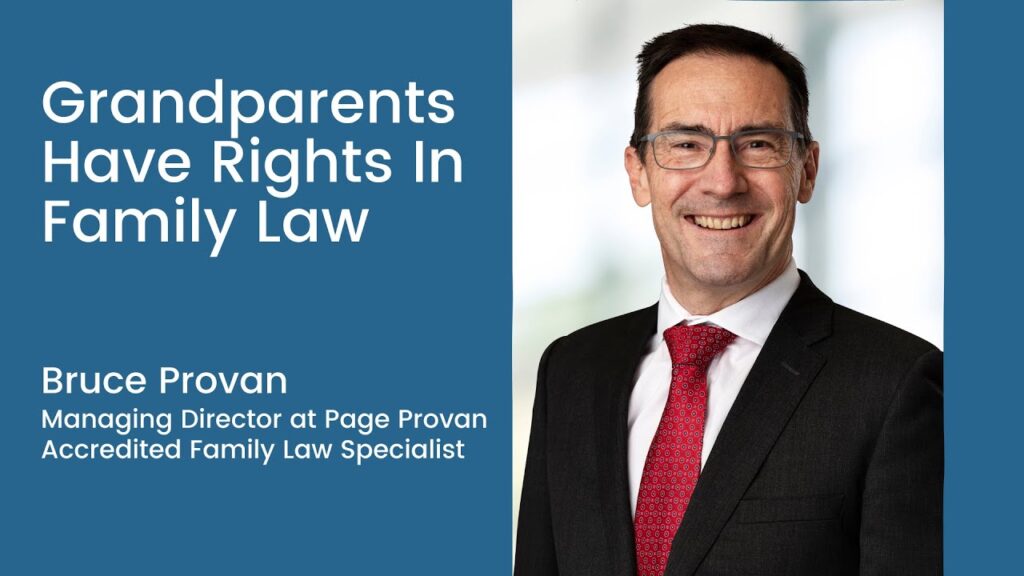FMC: who is a “parent” under s.60H of the Family Law Act?
In the recent Federal Magistrates Court case of Keaton and Aldridge, the court had to consider who was a “parent” within the meaning of s.60H of the Family Law Act.
The issue was relevant because Ms Keaton and Ms Aldridge were in a lesbian relationship, and then split up. Ms Aldridge had had a child through artificial conception procedures. The issues before the court included as to whether Ms Keaton was, as she contended, a parent of the child, and whether Ms Aldridge and Ms Keaton were, as Ms Keaton contended, in a de facto relationship.
The issue of when they were in a de facto relationship was important- if the requirement was that they needed to be in a de facto relationship as the time of conception, then Ms Keaton may not be a parent as they may not have been not living together; but if it were at the time of birth, then she would be a parent because by that time they were living together
Section 60H of the Family Law Act
As Chief Federal Magistrate Pascoe found, although the changes to the Family Law Act resulting in the de facto matters took effect this year [ on 1 March] , the change to section 60H occurred on 21 November 2008. This was even though they were in the same piece of legislation.
The relevant part of s.60H provides:
(1) If:
(a) a child is born to a woman as a result of the carrying out
of an artificial conception procedure while the woman was married to, or a de
facto partner of, another person (the other intended parent); and
(b)
either:
(i) the woman and the other intended parent consented to the
carrying out of the procedure, and any other person who provided genetic
material used in the procedure consented to the use of the material in an
artificial conception procedure; or
(ii) under a prescribed law of the
Commonwealth or of a State or Territory, the child is a child of the woman and
of the other intended parent;
then, whether or not the child is biologically
a child of the woman and of the other intended parent, for the purposes of this
Act:
(c) the child is the child of the woman and of the other intended
parent; and
(d) if a person other than the woman and the other intended
parent provided genetic material–the child is not the child of that person.
De facto relationship?
Pascoe CFM stated:
The applicant argued that the language of the section is ambiguous as to
whether the existence of the de facto relationship must be at the time of birth
or at the time of the artificial conception procedure and stated:
Absent the
commas, is it the born while the woman was a de facto partner, or a procedure
while the woman was a de facto partner? I think it’s open to either
interpretation. We would say, of course, it doesn’t matter because both apply.
But I don’t think it would be correct to say to your Honour that the only
interpretation that is available is that the relevant time is the time of the
conception.
I cannot agree with this interpretation. On a plain reading of
the words in s.60H(1)(a) it is quite clear that the phrase “while the woman was
married to, or a de facto partner of, another person” and in particular the term
‘while’ qualifies the phrase immediately before it which is “the carrying out of
an artificial conception procedure”. Therefore it is quite plain on the face of
the statute that the relevant time ‘the woman’ must be a ‘de facto partner’ of
another person is at the time the artificial insemination procedure is carried
out. There is no comma which separates the clause and on a literal reading of
the section I am not willing to impute any different meaning….
In fact, the literal reading which requires the de facto relationship to be
in effect at the time the artificial conception procedure is carried out is
consistent with what the section sets out to achieve. The provisions aim is to
establish a parent-child relationship between the child and the women who gave
birth to that child and her husband or de facto partner, even though another man
or women might be the biological parent of that child. Its overall purpose is to
place those couples who intend to be parents of a child through artificial
conception in the same position as parents who have children through more
traditional means….In my opinion, the legislation prescribes that the relevant time at
which the de facto relationship must be found to exist is the time of the
artificial conception procedure. In this case the procedure which led to the
child being conceived was performed in April 2005 and I find that this is the
relevant date at which a de facto relationship must be found to exist if the
requirements of s.60H(1)
are to be satisfied.
Was there a de facto relationship at the time of conception?
Pascoe CFM went through the checklist of matters as to whether or not at the time of conception there had been a de facto relationship, concluding that there had not been:
Without the ‘solemnities and formalities’ by which some hetero-sexual
couples declare that relationship in marriage, same-sex relationships are fluid
in the sense that it is difficult for them to discern what, if any,
circumstances will carry them across an invisible threshold to be a relationship
recognised by law.
One of the most important factors in determining whether
the parties in this case crossed that threshold relates to their commitment to
raising a child together.
Although the parties participated in the fertility
clinic program as a couple, and the applicant’s witnesses were of the view that
they were having a child together, I do not regard this as evidence of a mutual
commitment to a shared life together because of the evidence, which I accept,
that the applicant’s role in the child’s life had not been determined and was,
as she deposed a matter for the respondent to decide. The evidence demonstrates
that one of the main motivations for having a child was so that the respondent
would enjoy the experience of motherhood, and not because the parties wanted to
have a child and raise it together. The applicant was there to support the
respondent and it was up to the respondent to decide the applicant’s role in the
child’s life. No decision had been made as to the role the applicant would have
in the child’s life at the time the respondent underwent the procedure.
I
also place weight on the fact that the parties did not live together, but had
two separate residences. When the parties did move in together it was through
circumstance and not a desire to live under the same roof. The evidence also
made it clear that the parties did not consider each others home to be theirs
jointly. I have had regard to the fact the parties spent most nights of the week
together at one or the other’s residence and in a way that suited them;
Greenwood v Merkel (2004)
31 Fam LR 571; [2004]
NSWSC 43. However, the independent nature of their relationship carried
through to other aspects including, finances, property and possessions and to
basic chores around the house including cooking and cleaning.
I find that
the relationship lasted from September 2001 through to November 2006 and
although the relationship may have taken on different forms throughout this
timeframe, the parties remained committed to a relationship of some nature
throughout the whole time. Although the parties represented to the world that
they were a couple, I find that it was not in April 2005 a de facto relationship
as required by the legislation.
I find their living arrangements in April
2005, combined with all the other circumstances do not constitute ‘living
together on a genuine domestic basis’. The parties demonstrated a large degree
of independence in almost all aspects of their relationship. Accordingly, I find
that the parties were not in a de facto relationship at the time of April 2005
and consequently that s.60H(1)(a) is not satisfied….As the parties were not in a de facto relationship for the purposes of
s.60H(1)(a), I find that the applicant is not a parent of the child under
s.60H(1) of the Act.
Someone concerned with the care, welfare or development of the child?
Although not a parent, Pascoe CFM held that Ms Keaton was a person concerned with the care, welfare or development of the child and could therefore bring her application.












